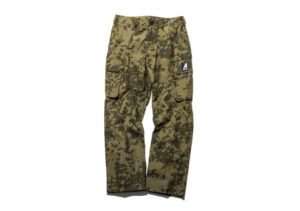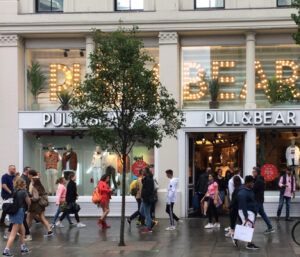In a music landscape defined by over-polished rollouts and algorithm-fed singles, there’s a certain kind of rawness that feels like rebellion. That rebellion is alive in “American Graffiti,” the new drop from Massachusetts hip-hop heavyweights Estee Nack and al.divino, produced by Grubby Pawz. It’s not just a track—it’s a scene.
A sonic mural painted with dense bars, low fidelity aesthetics, and coded references that only the tapped-in can fully appreciate.
Released with little fanfare but loaded with intent, the song and its visuals tap into the spirit of underground resistance—a middle finger to industry formulas, a love letter to the art of street storytelling, and a cryptic invitation to decode a layered message. And with a feature listed only as “???,” the mystique thickens.
This is underground done right: loud in sound, quiet in press, and rich with subtext.
THE ARTISTS: RAW ALCHEMY
Estee Nack is no stranger to listeners who live in the trenches of raw hip-hop. A Dominican-American MC from Lynn, Massachusetts, Nack’s style blends Supreme Mathematics, street philosophy, and complex rhyme schemes with an effortless, often bilingual delivery. His work with the Griselda crew—particularly with Westside Gunn and Conway the Machine—has elevated his profile, but Nack remains firmly rooted in the underground ethos: no compromises, no co-sign chases.
al.divino, another Massachusetts-born MC, operates in a similar frequency. He’s a cryptic figure: elusive, anti-mainstream, poetic in structure and abrasive in delivery. His catalog is vast and often purposely hard to access—limited pressings, Bandcamp exclusives, lo-fi visuals. He raps like he’s trying to exorcise something. Divino isn’t just making songs; he’s building scripture in the form of rap.
Together, Nack and Divino are a volatile chemical mix. Their previous collaborations have earned cult status for their density, aggression, and lyrical acrobatics. With “American Graffiti,” they sharpen their weapons further.
THE PRODUCER: GRUBBY PAWZ
At the heart of the track is Grubby Pawz, a producer known for grimy textures, dusty loops, and soul-sample chops that feel dug out of a basement crate in 1997. But there’s more to Pawz than nostalgia. His production gives space for the abstract, the off-kilter. His beats don’t just set the stage—they provoke.
On “American Graffiti,” he loops a haunting vocal sample over a minimal but aggressive drum pattern. It’s eerie, cinematic, and full of static. The beat feels lived-in, worn down, like a film reel that’s been replayed too many times. Perfectly imperfect. The type of instrumental that invites verses, not hooks.
The track never tries to do too much. It knows its mission: set a mood, leave a mark.
THE SONG: LYRICAL BOMBING
The title “American Graffiti” does a lot of heavy lifting. At surface level, it references the act of tagging—claiming space in public, permanent or not. But deeper down, it gestures toward identity, legacy, rebellion. In a country obsessed with erasing, Estee Nack and al.divino are making marks that don’t come off.
The bars? Dense. References spill out like paint from a busted can. There are lines about Supreme Clientele-era Ghostface, Islamic mysticism, dead stock sneakers, and Dominican cultural nods—all layered over each other, like graffiti tags in a train yard. It’s not rap for casual listeners. It’s rap for those who rewind.
Lines like:
“Tagged my name in a cipher, Nack writin’ in Divine / Wildstyle with the weapon, leave a mural in your mind”
This is lyrical bombing—making sure their names stick long after the music fades.
Each verse is packed with intentional dissonance: syntax that refuses to be neat, imagery that clashes with the beat’s warmth, deliveries that crackle with attitude. You don’t catch every line on the first listen. That’s the point. These aren’t tracks to skim—they demand engagement.
THE VISUALS: FILM GRAIN & SHADOW PLAY
The video, shot and edited by @1.800.CALL, feels like it was ripped from an underground VHS tape. Set against shadowy alleys, raw interiors, and static cuts, the visuals add another layer of grime to the experience. There’s no attempt to glamorize the artists or the setting. The frame is tight, the colors are desaturated, the pacing is erratic.
It’s a deliberate aesthetic. The style is closer to early 90s cinema or guerrilla art documentaries than modern rap videos. Faces appear half-lit. Quick cuts disrupt any rhythm the viewer tries to settle into. There’s a feeling of discomfort, of tension. Just like the track itself.
We don’t see the mystery feature in the video. No cameo, no credit. Just a presence—another layer in an already layered piece of work.
WHO IS “???”: THE FEATURE MYSTERY
In a move that mirrors classic underground mystique, the track features an unnamed artist, simply labeled as “???” in the title. No social tags. No lyric breakdowns. No press mention. Just a verse dropped in with surgical precision.
The delivery is distinct: slow, almost methodical, with a rasp that suggests wear but not weakness. The tone matches the track’s energy perfectly—detached, sharp, reflective. Whoever this is, they’re not new. They sound like a veteran who has nothing left to prove, only things left to say.
Online speculation is already brewing. Some believe it’s a masked alias for a known underground MC. Others point to voice similarities with mid-2000s indie rap figures. A few even suggest it could be an early Griselda affiliate. The truth? Doesn’t matter—not yet. The lack of ID adds to the track’s lore.
It’s not just mystery for mystery’s sake. It’s an artistic choice. A rejection of ego and algorithm. The kind of move that makes you do the digging.
“AMERICAN GRAFFITI” AS A CULTURAL COMMENT
Beyond the sound, beyond the visuals, “American Graffiti” functions as a cultural artifact—a critique and a statement.
Graffiti, as a form, has always been tied to marginal voices. It’s uninvited, often criminalized, but deeply human. It’s a refusal to stay quiet. In naming this track after it, Nack and Divino are aligning their rap with the same ethos: Make your voice seen. Claim the space. Risk everything.
In the age of branded hip-hop—where labels chase TikTok hits and artists dilute their vision for visibility—this track is defiant. There’s no radio edit. No hook. No attempts at mass appeal. Just three minutes of dense, grimy, radical self-expression.
It’s a rejection of industry cleanliness. A refusal to be safe. And a commitment to telling the truth in its rawest, dirtiest form.
WHERE IT FITS: THE MODERN UNDERGROUND
“American Graffiti” exists in a growing scene that’s flourishing outside the mainstream. Artists like Boldy James, Mach-Hommy, Ka, Rome Streetz, and billy woods have shown that there’s an appetite for lyrical density and production that resists polish. Nack and Divino are key players in this space—consistently delivering complex, uncompromising projects without ever chasing trends.
Grubby Pawz, as a producer, is part of that same resurgence—a movement rooted in East Coast tradition but globally resonant. His fingerprints are all over this underground revival, alongside producers like Camoflauge Monk, Conductor Williams, and Nicholas Craven.
“American Graffiti” doesn’t just contribute to this wave—it reinforces it.
IMPRESSION: A Track That Stains
In a musical landscape where most songs fade after a week, “American Graffiti” sticks. It’s not here to be viral. It’s here to be vital. It’s a record built from concrete and memory, from grit and precision. It honors hip-hop’s foundations without sounding like throwback cosplay.
It’s a graffiti tag on the wall of contemporary rap—a name etched in bars, in grainy visuals, in cryptic liner notes.
And in true underground fashion, it leaves you with questions. Who’s the mystery feature? What’s the next move? Where’s the album? But most importantly: it leaves a mark.
The kind that doesn’t get buffed.
No comments yet.








